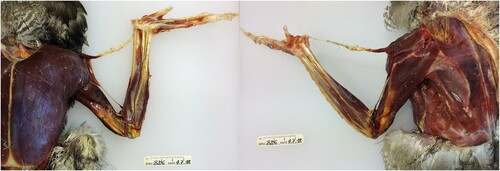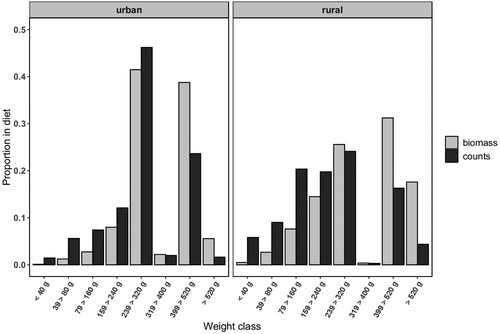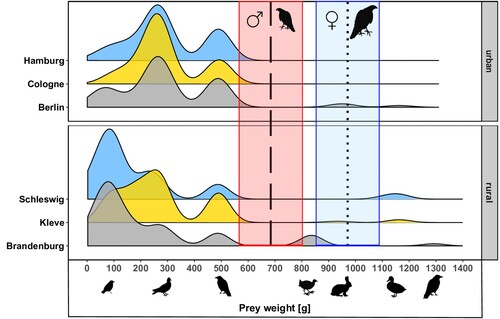Figures & data
Figure 1. Flight muscles of the left-hand body side of a male Goshawk from a ventral (left) and a dorsal (right) view after skinning, prior to dissection.

Table 1. Different body measurements and parameters calculated for individual male and female Goshawks. TFMM = Total flight muscle mass; MCC = Maximum carrying capacity; MLCC = Maximum load carrying capacity.
Figure 2. Proportion of prey by weight classes by means of counts and biomass for the two different environments.

Table 2. Features of breeding season diet for Goshawks at urban and rural study sites.
Figure 3. Density distribution of prey weights for all six study sites. Dashed (male goshawk, red area) and dotted (female goshawk, blue area) indicate mean maximum additional load, with coloured lines representing standard errors. Pictograms of exemplary prey species are positioned as a reference and according to their body weight.

